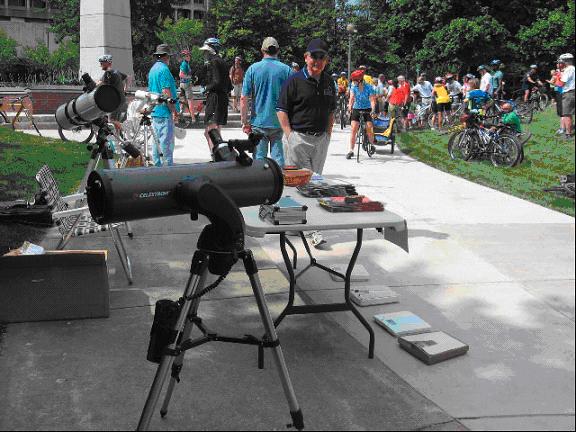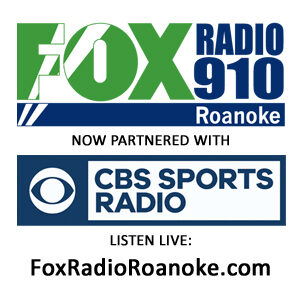
If you happen to see a group of Roanokers on a clear dark night staring off into the sky, there might be a sensible explanation. These Roanokers might actually be stargazers, members of the Roanoke Valley Astronomical Society (RVAS).
The 60 member RVAS meets regularly to explore and discuss the oddities of the cosmos, a fascination they all seem to have in common. Their stated purpose is to learn about astronomy, make friends, and to spend time viewing the universe through a telescope.
Gathering on the 5th floor of the Center in the Square Building for their meeting the third Monday of each month, they conduct club business, and then spend the rest of the time learning about space and science.
Viewing the heavens with telescopes is their common bond. You might think you need to have an expensive telescope or be an expert in science in order to participate. “Absolutely not”, says Randy Sowden, President of the Roanoke Valley Astronomy Society. “I was a member of the club for several years before I bought a scope. In fact, there are many members who have no intention whatsoever of buying a telescope…and that is perfectly fine.”
The astronomy club welcomes all people, including novices who only have a basic knowledge of space, but possess a fascination and a desire to learn more. That desire to learn is shared by members who are experts in fields of science and astronomy, such as radio astronomy and quantum physics.
Whether one is an expert in astronomy or only has a rudimentary understanding of the basics they can still experience the cosmos, according to Sowden. “With binoculars or a small telescope you can see several amazing objects. Three that come mind are M13 in the constellation Hercules (a tight, gas-shrouded ball of about a million stars), the Orion Nebula in the constellation Orion, and the many Nebula around the constellation Sagittarius, which lies in the direction of the galactic center of the Milky Way.”
Sowden continues, “The type of nebulae referred to here are light emitting nebulae. They are huge clouds of glowing gas that are lit up by new stars forming within them. Each one is much larger than our entire solar system!”
Among the group’s favorite activities are field trips to view the universe. At night and in places away from light pollution, like the Cahas Mountain Overlook on the Blue Ridge Parkway at mile marker 139.5, the general public is invited to see for themselves the planets, stars and celestial objects with telescopes already set up for them. “There is nothing members like more than having others look through their telescope when they have dialed in on something cool.” Sowden noted.
The club has six “outreach” events open to the public every year. Recent ones have included observing Saturn from Mill Mountain, viewing the constellations at Staunton River High School, and even a daytime observation of the sun at the Strawberry Festival in Elmwood Park.
In addition to outings, the club also maintains an extensive website, complete with research essays, a photo newsletter, as well as links to the latest discoveries in science and astronomy. It can be found at http://www.rvasclub.org.
The next time you see a group of Roanokers out in the night looking through strange devices at the sky, they might just invite you over to see for yourself what’s really out there.
By Wade Thompson [email protected]


Wade, thanks for spotlighting our community group. Ordinarily, we astronomers don’t like spotlights, but this is the exception. As the club’s newsletter editor, I thank you, and invite all of your readers to check out our monthly newsletters at: http://rvasclub.org/rvas-news/index.shtml
Clark M. Thomas